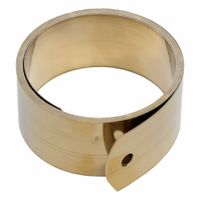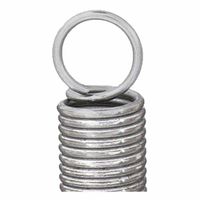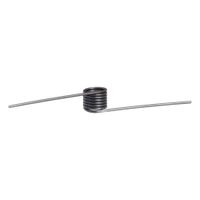Call +(254) 703 030 000 / 751 483 999 / 721 704 777
.....Read More
Frequently Asked Questions
What are the different types of springs and their applications?
Springs are mechanical devices that store and release energy, typically by deforming under stress and returning to their original shape when the stress is removed. They come in various forms, each suited for specific applications:1. Coil Springs: These are the most common type, made from wire coiled into a cylindrical or conical shape.
* Compression Springs: Designed to resist compressive forces, they are used in car suspensions, pens, and mattresses.
* Extension Springs: Designed to resist tensile forces, they are found in trampolines, garage doors, and weighing scales.
* Torsion Springs: Designed to exert torque or rotational force, they are used in clothespins, garage doors, and clipboards.
2. Leaf Springs: Consisting of several layers (leaves) of metal, they are primarily used in vehicle suspensions, especially in trucks and SUVs, to absorb shocks and support heavy loads.
3. Flat Springs: These are thin, flat strips of metal that are bent or shaped to store energy. Examples include constant force springs (used in retractable tape measures and cable retractors) and motor springs (found in clocks and toys).
4. Volute Springs: Conical compression springs with a flat strip coiled into a cone, they offer a high load capacity in a compact space, often used in railway buffers and heavy machinery.
5. Disc Springs (Belleville Washers): These are conical washers that provide a high load capacity in a small space, often used in bolted joints to maintain tension, in brakes, and as overload clutches.
6. Gas Springs: Unlike mechanical springs, these use compressed gas to store energy, providing a smooth and controlled force. They are common in car tailgates, office chairs, and industrial machinery.The choice of spring depends on factors like required load, deflection, space constraints, operating environment, and desired life cycle.
How do compression springs work to absorb impacts?
Compression springs absorb impacts by converting kinetic energy into potential energy. When an external force compresses the spring, the coils are pushed closer together, causing the material of the spring to deform elastically. This deformation stores the energy from the impact as potential energy within the spring. The spring's design, including its material, wire diameter, coil diameter, and number of active coils, determines its spring rate, which is the amount of force required to compress the spring a certain distance. A higher spring rate means the spring is stiffer and can absorb more force over a shorter deflection. Once the impact force is removed, the stored potential energy is released, and the spring returns to its original shape, dissipating the energy. This process helps to cushion the impact, reduce shock, and protect components from damage by distributing the force over time and distance.
What are die springs and where are they used?
Die springs are heavy-duty compression springs specifically designed for applications requiring high force in a compact space. They are characterized by their rectangular wire and often have a distinctive color coding system (e.g., green, blue, red, yellow) to indicate their load capacity or stiffness. Unlike conventional coil springs, die springs are manufactured to withstand extreme loads and fatigue, making them ideal for demanding industrial environments.
They are predominantly used in press tools and dies for stamping, punching, and forming operations, where they provide the necessary force to return the punch to its original position after each stroke. Beyond die sets, their robust construction makes them suitable for a wide range of other heavy-duty applications. These include clutch and brake mechanisms, machine tools, agricultural machinery, and various industrial equipment where high-force compression and durability are critical. Their ability to deliver consistent force over many cycles makes them a reliable choice for maintaining precise alignment and performance in machinery.
How do extension springs differ from other types of springs?
Extension springs are a type of helical spring that absorb and store energy by resisting a pulling force. Unlike compression springs, which are designed to resist compressive forces and become shorter when a load is applied, extension springs are stretched and extended when a load is applied. They typically have hooks or loops at their ends, which allow them to be attached to other components in an assembly.
Another common type is the torsion spring, which exerts a torque or rotational force and stores energy when twisted. While extension springs are all about pulling, and compression springs about pushing, torsion springs are designed for rotational motion.
The key distinguishing feature of extension springs is their initial tension. This is an internal force that holds the coils tightly together even when no external load is applied. This initial tension must be overcome before the spring begins to extend, contributing to a more controlled and consistent force output across its working range. This is a characteristic not typically found in standard compression or torsion springs, which are usually at rest with minimal or no internal tension. Therefore, their application often involves situations where a return force is needed to pull components back together, such as in trampolines, garage doors, or various types of levers and linkages.
What are torsion springs used for and how do they function?
Torsion springs are mechanical components designed to apply torque or rotational force, commonly used in various applications where controlled angular movement or rotational energy storage is required. They function by twisting their coils as a load is applied, storing mechanical energy that is then released as the spring untwists.
When a rotational force is applied to one end of a torsion spring while the other end is held stationary or moves in an opposite direction, the spring material undergoes torsional deflection. This twisting action creates internal stress within the spring wire, allowing it to store potential energy. When the load is removed, the spring returns to its original position, releasing the stored energy and exerting a rotational force in the opposite direction. The amount of torque a torsion spring can exert is dependent on its material, wire diameter, coil diameter, and the number of coils. Common uses include clothes pins, garage doors, clipboards, and hinges.
How do disc and Belleville springs absorb shocks and vibrations?
Disc springs, also known as Belleville springs, are conically shaped washers designed to be loaded along their axis. Their unique design allows them to deflect under axial load, providing a controlled spring rate and high load capacity in a compact space.
When subjected to a shock or vibration, disc springs absorb this energy through their elastic deformation. As the load is applied, the conical shape flattens, storing the energy within the material. When the load is removed or reduced, the spring returns to its original shape, releasing the stored energy. This process effectively dampens shocks and vibrations by converting kinetic energy into potential energy and then dissipating it.
The ability of disc springs to absorb significant energy in a small volume makes them ideal for applications requiring shock absorption and vibration isolation. They can be stacked in various configurations (series, parallel, or a combination) to achieve different load-deflection characteristics, allowing for fine-tuning of their shock and vibration absorption capabilities to specific application needs. Their robust construction also makes them durable and reliable in demanding environments.
What is the purpose of constant-force coil springs?
Constant-force coil springs are mechanical devices designed to deliver a consistent, uniform force over a specified range of extension or deflection. Unlike traditional compression or extension springs, which exhibit a linear increase or decrease in force with displacement, constant-force springs maintain virtually the same load throughout their working stroke.
This unique characteristic is achieved through their specific coiling and material properties. They are typically made from pre-stressed flat strip material, tightly wound into a coil. When extended, the material uncoils, and the internal stresses within the spring maintain a nearly constant resisting force.
The primary purpose of these springs lies in applications requiring a precise and predictable force output, irrespective of the position or extension. Common uses include counterbalancing mechanisms in various equipment, such as window sashes, medical devices, and display stands, where they provide smooth and effortless movement. They are also used in cable retractors, brush holders in motors, and constant-tension devices in printers and other machinery to ensure consistent pressure or retraction. Their ability to store a significant amount of energy in a compact form also makes them suitable for applications with limited space.
How do garter springs provide radial pressure?
Garter springs are helical compression springs with their ends connected to form a continuous circle. They provide radial pressure by exerting a uniform inward or outward force around a circular or cylindrical component. This pressure is generated due to the spring's tendency to return to its original, uncompressed state. When a garter spring is stretched around a shaft or compressed into a bore, it generates a radial force as it tries to contract or expand to its natural diameter. This uniform pressure makes them ideal for applications such as oil seals, where they maintain consistent contact between the seal lip and the shaft, or in drive belts, where they ensure proper tension. The amount of radial pressure can be controlled by the spring's wire diameter, coil diameter, and the initial tension of the spring.
What are gas springs and how do they function in lifting and supporting objects?
Gas springs, also known as gas struts or gas shocks, are self-contained, hydropneumatic devices that provide a controlled force for lifting, lowering, counterbalancing, and supporting objects. They consist of a sealed cylinder containing pressurized nitrogen gas and a small amount of oil, a piston rod, and a piston with an orifice.
Their function relies on the principles of compressed gas and hydraulics. When the piston rod is compressed into the cylinder, the nitrogen gas inside is compressed, creating a force that pushes the rod back out. The oil within the cylinder serves several purposes: it lubricates moving parts, provides damping characteristics (controlling the speed of movement), and helps seal the gas.
When used for lifting or supporting objects, the gas spring is typically mounted between two points, such as a lid and a frame. As the lid is opened, the gas spring extends, providing an assistive lifting force that makes the object feel lighter. Conversely, when the lid is closed, the gas spring provides a controlled resistance, preventing it from slamming shut. The force exerted by a gas spring is determined by the pressure of the nitrogen gas and the cross-sectional area of the piston rod. They are commonly found in applications like car bonnets and tailgates, office chairs, industrial machinery, and furniture hinges, offering smooth, controlled, and effortless movement.
How do rotary dampers control the closing rate of doors and lids?
Please specify the topic you would like me to elaborate on.







